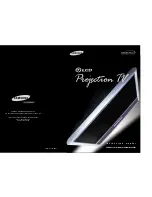
Additionally, the SCB star point, when available, can be either directly earthed , earthed via
impedance or isolated from earth. Which type of SCB earthing is used depends on voltage
level, used circuit breaker, utility preference and previous experience. Many utilities have
standard system earthing principle to earth neutrals of SCB above 100 kV.
Switching of SCB will produce transients in power system. The transient inrush current during
SCB energizing typically has high frequency components and can reach peak current values,
which are multiples of SCB rating. Opening of capacitor bank circuit breaker may produce step
recovery voltages across open CB contact, which can consequently cause restrikes upon the
first interruption of capacitive current. In modern power system the synchronized CB closing/
opening may be utilized in such a manner that transients caused by SCB switching are avoided.
7.10.2.1
SCB protection
GUID-9E537AFB-BB23-4431-AC98-D4827A608F81 v2
IED protection of shunt capacitor banks requires an understanding of the capabilities and
limitations of the individual capacitor units and associated electrical equipment. Different
types of shunt capacitor bank fusing, configuration or earthing may affect the IED selection
for the protection scheme. Availability and placement of CTs and VTs can be additional limiting
factor during protection scheme design.
SCB protection schemes are provided in order to detect and clear faults within the capacitor
bank itself or in the connected leads to the substation busbar. Bank protection may include
items such as a means to disconnect a faulted capacitor unit or capacitor element(s), a means
to initiate a shutdown of the bank in case of faults that may lead to a catastrophic failure and
alarms to indicate unbalance within the bank.
Capacitor bank outages and failures are often caused by accidental contact by animals.
Vermin, monkeys, birds, may use the SCB as a resting place or a landing site. When the animal
touches the HV live parts this can result in a flash-over, can rapture or a cascading failures that
might cause extensive damages, fire or even total destruction of the whole SCB, unless the
bank is sufficiently fitted with protection IEDs.
In addition, to fault conditions SCB can be exposed to different types of abnormal operating
conditions. In accordance with IEC and ANSI standards capacitors shall be capable of
continuous operation under contingency system and bank conditions, provided the following
limitations are not exceeded:
1.
Capacitor units should be capable of continuous operation including harmonics, but
excluding transients, to 110% of rated IED root-mean-square (RMS) voltage and a crest
voltage not exceeding of rated RMS voltage. The capacitor should also be able to carry
135% of nominal current. The voltage capability of any series element of a capacitor unit
shall be considered to be its share of the total capacitor unit voltage capability.
2.
Capacitor units should not give less than 100% nor more than 110% of rated reactive
power at rated sinusoidal voltage and frequency, measured at a uniform case and internal
temperature of 25°C.
3.
Capacitor units mounted in multiple rows and tiers should be designed for continuous
operation for a 24h average temperature of 40 °C during the hottest day, or −40 °C during
the coldest day expected at the location.
4. Capacitor units should be suitable for continuous operation at up to 135% of rated
reactive power caused by the combined effects of:
•
Voltage in excess of the nameplate rating at fundamental frequency, but not over
110% of rated RMS voltage
•
Harmonic voltages superimposed on the fundamental frequency
•
Reactive power manufacturing tolerance of up to 115% of rated reactive power
5. Capacitor units rated above 600 V shall have an internal discharge device to reduce the
residual voltage to 50 V or less in 5 or 10 minutes (depending on national standard).
Note that capacitor units designed for special applications can exceed these ratings.
1MRK 505 370-UEN D
Section 7
Current protection
Busbar protection REB670
203
Application manual
Summary of Contents for REB670 Series
Page 1: ...Relion 670 SERIES Busbar protection REB670 Version 2 2 IEC Application manual ...
Page 2: ......
Page 22: ...16 ...
Page 64: ...58 ...
Page 226: ...220 ...
Page 244: ...238 ...
Page 358: ...352 ...
Page 392: ...386 ...
Page 398: ...392 ...
Page 436: ...430 ...
Page 454: ...448 ...
Page 466: ...460 ...
Page 474: ...468 ...
Page 475: ...469 ...










































